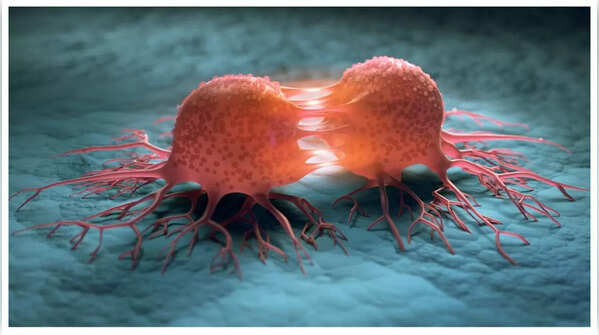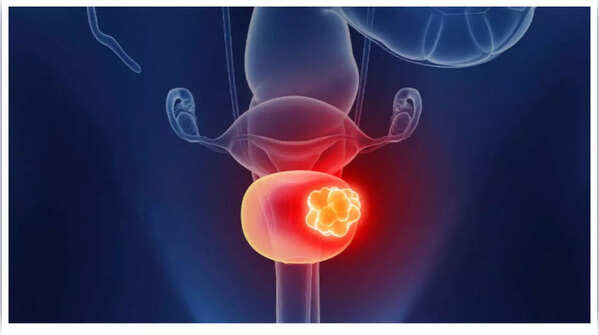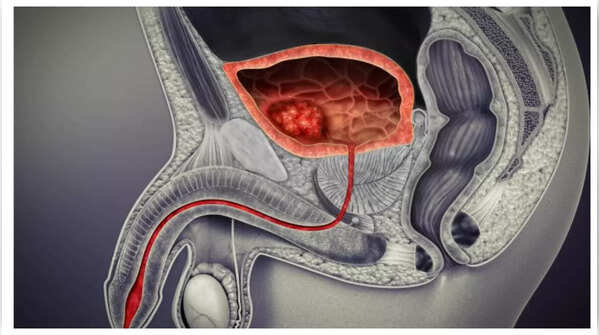Bladder cancer, characterized by the formation of cancerous cells within the bladder tissues, is more prevalent in men over 55. While blood in the urine is often recognized as a primary indicator, other less conspicuous symptoms can be easily overlooked in the early stages. Recognizing these subtle signs is crucial for timely diagnosis and intervention. Here are five potential symptoms of bladder cancer that warrant immediate attention:

An early indication of bladder cancer can be a noticeable change in urination habits. This includes needing to urinate more often than usual, even without increased fluid intake, or experiencing a sudden, intense urge to urinate, even when the bladder isn't full. This symptom, easily mistaken for a urinary tract infection or an overactive bladder, can mask the underlying issue. Persistent changes in urination patterns, especially when accompanied by other symptoms, necessitate a medical evaluation to rule out potential bladder irritation or growths.

Experiencing pain or a burning sensation during urination can be attributed to common infections like a UTI. However, it can also signal bladder cancer. The discomfort arises from inflammation or irritation of the bladder lining caused by cancerous cells. Unlike UTIs, which typically respond to antibiotics, pain related to bladder cancer may persist or recur. Consulting a healthcare professional is recommended if painful urination is accompanied by blood in the urine or frequent urination.

Bladder cancer can manifest as a persistent feeling of needing to urinate even when the bladder is empty. This frustrating sensation doesn't subside after using the restroom and is often mistaken for a urinary tract infection due to the similarity in symptoms. Tumors or abnormal growths within the bladder can irritate nerves or reduce bladder capacity, sending incorrect signals to the brain. Immediate medical attention is necessary if this feeling persists or intensifies, as it could indicate bladder abnormalities.

While early-stage bladder cancer may not cause pain, discomfort or aching in the lower back or pelvic region can arise as the disease advances. This pain is often described as dull and persistent, potentially being mistaken for muscle strain or other common conditions. Such pain may indicate that the cancer has spread deeper into the bladder wall or adjacent tissues. Unexplained lower back or pelvic pain, particularly when combined with urinary symptoms, should not be disregarded.

Although visible blood in the urine is a well-known sign of bladder cancer, sometimes the urine may appear normal but contain trace amounts of blood detectable only through lab tests. This condition, known as microscopic hematuria, results in a subtle change in urine color rather than a distinct pink or red hue. Because the change is not always obvious, microscopic blood in the urine may go unnoticed unless a urine test is performed for other reasons. Regular urine tests are advisable for individuals with risk factors such as smoking, exposure to harmful chemicals, or a family history of bladder cancer, as early detection can significantly improve outcomes.
Sources:
Newer articles
Older articles
 5 Overlooked Warning Signs of Colon Cancer: Early Detection Saves Lives
5 Overlooked Warning Signs of Colon Cancer: Early Detection Saves Lives
 Shukla's ISS Arrival Heralds New Era for Indian Space Exploration; Gaganyaan Mission Looms
Shukla's ISS Arrival Heralds New Era for Indian Space Exploration; Gaganyaan Mission Looms
 Vijay Sethupathi Apologizes Amid Controversy Over Son Surya's Film 'Phoenix'; Thalapathy Vijay's Support Revealed
Vijay Sethupathi Apologizes Amid Controversy Over Son Surya's Film 'Phoenix'; Thalapathy Vijay's Support Revealed
 Android Security Alert: Government Warns of Critical Flaws Exposing User Data
Android Security Alert: Government Warns of Critical Flaws Exposing User Data
 Ashada Gupt Navratri 2025: Dates, Significance, and How to Observe This Hidden Festival
Ashada Gupt Navratri 2025: Dates, Significance, and How to Observe This Hidden Festival
 Skin Deep: 7 Warning Signs on Your Skin That Could Signal Heart Trouble
Skin Deep: 7 Warning Signs on Your Skin That Could Signal Heart Trouble
 Smith Eyes Grenada Test Return After Injury Layoff
Smith Eyes Grenada Test Return After Injury Layoff
 Staying Hydrated May Significantly Lower Risk of Heart Failure, New Study Suggests
Staying Hydrated May Significantly Lower Risk of Heart Failure, New Study Suggests
 Moto G54 Price Slashed in India: Check Out the New, Lowered Costs
Moto G54 Price Slashed in India: Check Out the New, Lowered Costs
 Gambhir Sidelines Pant's Twin Tons After India's Test Loss, Emphasizes Team Performance
Gambhir Sidelines Pant's Twin Tons After India's Test Loss, Emphasizes Team Performance